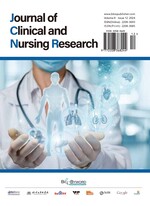Mechanistic Insights into Ginger’s Role in Improving Sperm Malformation Under Heat Stress Using Network Pharmacology and Molecular Docking
Abstract
Objective: This study investigates the effects of ginger on sperm dysmorphosis under heat stress using network pharmacology and molecular docking techniques. Methods: The core components, target sites, and primary pathways of ginger were predicted using the TCMSP database. Genes associated with sperm malformation and heat stress were identified through databases such as GeneCards and DisGeNET, followed by KEGG and GO analyses based on intersections with ginger targets. Core genes identified via Cytoscape software were subjected to molecular docking with ginger’s active components. Results: The principal active components of ginger identified include β-sitosterol and dihydrocapsaicin. Network pharmacology analysis suggested that ginger exerts its effects through pathways such as the prostate cancer signaling pathway, estrogen signaling pathway, inflammatory pathways, and nuclear receptor signal transduction. These pathways may ameliorate sperm malformation symptoms caused by heat stress. Conclusion: Integrating findings from network pharmacology and molecular docking, the active components of ginger potentially modulate the expression of heat shock proteins during heat stress via inflammatory and oxidative stress pathways. This modulation may protect spermatogenesis under heat stress and improve sperm malformation.
References
Mahomoodally MF, Aumeeruddy MZ, Rengasamy KRR, et al., 2021, Ginger and Its Active Compounds in Cancer Therapy: From Folk Uses to Nano-Therapeutic Applications. Semin Cancer Biol, 69: 140–149. https://doi.org/10.1016/j.semcancer.2019.08.009
Thongwong P, Wattanathorn J, Thukhammee W, et al., 2023, The Potential Role of the Novel Orodispersible Film from Rice Polymer Loaded with Silkworm Pupae Hydrolysate and the Combined Extract of Holy Basil and Ginger for the Management of Stroke with Stress. Biomaterials, 299: 122175. https://doi.org/10.1016/j.biomaterials.2023.122175
Robinson BR, Netherton JK, Ogle RA, et al., 2023, Testicular Heat Stress, a Historical Perspective and Two Postulates for Why Male Germ Cells are Heat Sensitive. Biol Rev Camb Philos Soc, 98(2): 603–622. https://doi.org/10.1111/brv.12921
Cao KX, Deng ZC, Liu M, et al., 2023, Heat Stress Impairs Male Reproductive System with Potential Disruption of Retinol Metabolism and Microbial Balance in the Testis of Mice. J Nutr, 153(12): 3373–3381. https://doi.org/10.1016/j.tjnut.2023.10.017
Ammar O, Mehdi M, Muratori M, 2020, Teratozoospermia: Its Association with Sperm DNA Defects, Apoptotic Alterations, and Oxidative Stress. Andrology, 8(5): 1095–1106. https://doi.org/10.1111/andr.12778
Wang Q, Chen T, La M, et al., 2023, Activity Labelled Molecular Networking Fuels the Antioxidation Active Molecules Profile of Ginger. Food Chem, 424: 136343. https://doi.org/10.1016/j.foodchem.2023.136343
Ozkur M, Benlier N, Takan I, et al., 2022, Ginger for Healthy Ageing: A Systematic Review on Current Evidence of Its Antioxidant, Anti-Inflammatory, and Anticancer Properties. Oxid Med Cell Longev, 2022: 4748447. https://doi.org/10.1155/2022/4748447
Ballester P, Cerdá B, Arcusa R, et al., 2023, Antioxidant Activity in Extracts from Zingiberaceae Family: Cardamom, Turmeric, and Ginger. Molecules, 28(10): 4024. https://doi.org/10.3390/molecules28104024
Barragán AL, Avendaño-Reyes L, Mellado-Bosque M, et al., 2023, Seasonal Heat Stress Compromises Testicular Thermoregulation and Semen Quality of Dorper Rams Raised in a Desert Climate. J Therm Biol, 118: 103737. https://doi.org/10.1016/j.jtherbio.2023.103737
Ozer OF, Akbulut H, Guler EM, et al., 2019, Oxidative Stress and Phenotype Frequencies of Paraoxonase-1 in Teratozoospermia. Andrologia, 51(8): e13299. https://doi.org/10.1111/and.13299
Li Y, Wang Y, Wen Y, et al., 2021, Whole-Exome Sequencing of a Cohort of Infertile Men Reveals Novel Causative Genes in Teratozoospermia that are Chiefly Related to Sperm Head Defects. Hum Reprod, 37(1): 152–177. https://doi.org/10.1093/humrep/deab229
Liu L, Yang J, Zhang WJ, et al., 2024, The Identification of AMZ2 as a Candidate Causative Gene in a Severe Teratozoospermia Patient Characterized by Vacuolated Spermatozoa. Asian J Androl, 26(1): 107–111. https://doi.org/10.4103/aja202321
Beurois J, Cazin C, Kherraf ZE, et al., 2020, Genetics of Teratozoospermia: Back to the Head. Best Pract Res Clin Endocrinol Metab, 34(6): 101473. https://doi.org/10.1016/j.beem.2020.101473
Wei X, Liu W, Zhu X, et al., 2021, Biallelic Mutations in KATNAL2 Cause Male Infertility Due to Oligo-Astheno-Teratozoospermia. Clin Genet, 100(4): 376–385. https://doi.org/10.1111/cge.14009
Coutton C, Martinez G, Kherraf ZE, et al., 2019, Bi-allelic Mutations in ARMC2 Lead to Severe Astheno-Teratozoospermia Due to Sperm Flagellum Malformations in Humans and Mice. Am J Hum Genet, 104(2): 331–340. https://doi.org/10.1016/j.ajhg.2018.12.013


